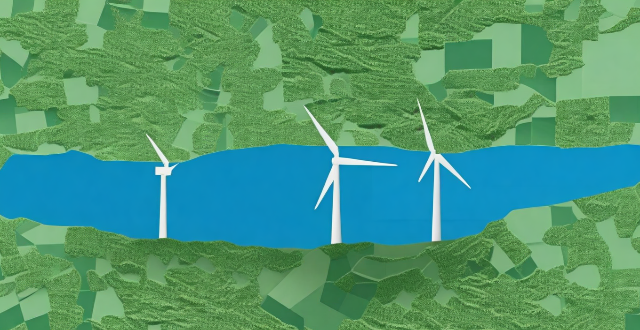The potential for wind energy in a region depends on geographical features, wind speed and consistency, governmental policies, environmental and social considerations, and infrastructure accessibility. Coastal areas, plateaus, mountain passes, and open plains typically have better wind energy potential due to consistent wind patterns and less obstruction. High average wind speeds and consistency are crucial for effective power generation. Governmental policies such as Renewable Portfolio Standards, feed-in tariffs, and tax credits can encourage wind energy development. Environmental and social considerations include wildlife impact, visual and noise pollution, and local economy effects. Infrastructure and accessibility to power grids and transportation networks are also important factors.

Assessing the Potential for Wind Energy in Your Region
Wind energy, a renewable source of power derived from the movement of air, has seen significant growth in recent years as an alternative to traditional fossil fuels. The potential for wind energy in your region depends on several factors, including geographical features, wind speed and consistency, and governmental policies. Below we explore these elements in detail.
Geographical Features
The topography and landscape of your region play a crucial role in determining wind energy potential:
- Coastal Areas: Often have consistent wind patterns due to land-sea temperature differences.
- Plateaus and Mountain Passes: Can create wind acceleration zones, enhancing turbine output.
- Open Plains: Typically experience less obstruction from buildings or trees, allowing for better wind flow.
Wind Speed and Consistency
The effectiveness of wind turbines is directly related to the average wind speed:
- High Average Wind Speeds: Ideal for harnessing wind energy (>6 meters per second).
- Consistency: Steady winds are more reliable than fluctuating ones for power generation.
Governmental Policies and Incentives
Local, state, and national policies can significantly impact the development of wind energy infrastructure:
- Renewable Portfolio Standards (RPS): Regulations requiring a certain percentage of electricity to come from renewable sources.
- Feed-in Tariffs: Guaranteed pricing for energy fed into the grid from renewable sources.
- Tax Credits and Subsidies: Financial incentives for renewable energy projects.
Environmental and Social Considerations
While wind energy offers a greener alternative, there are environmental and social aspects to consider:
- Wildlife Impact: Turbines may affect bird and bat populations.
- Visual and Noise Pollution: Some communities may object to the appearance or sound of wind farms.
- Local Economy: Job creation and economic benefits versus potential drawbacks like changing rural character.
Infrastructure and Accessibility
Lastly, the existing infrastructure and accessibility of areas for setting up wind farms are important:
- Proximity to Power Grid: Easier connection for regions close to transmission lines.
- Transportation Network: Necessary for moving large turbine components.
Conclusion
Determining the potential for wind energy in your region requires a comprehensive analysis of geographical features, wind patterns, policy frameworks, environmental impacts, and infrastructure readiness. By considering these key points, stakeholders can make informed decisions about the viability of wind energy projects in their area.